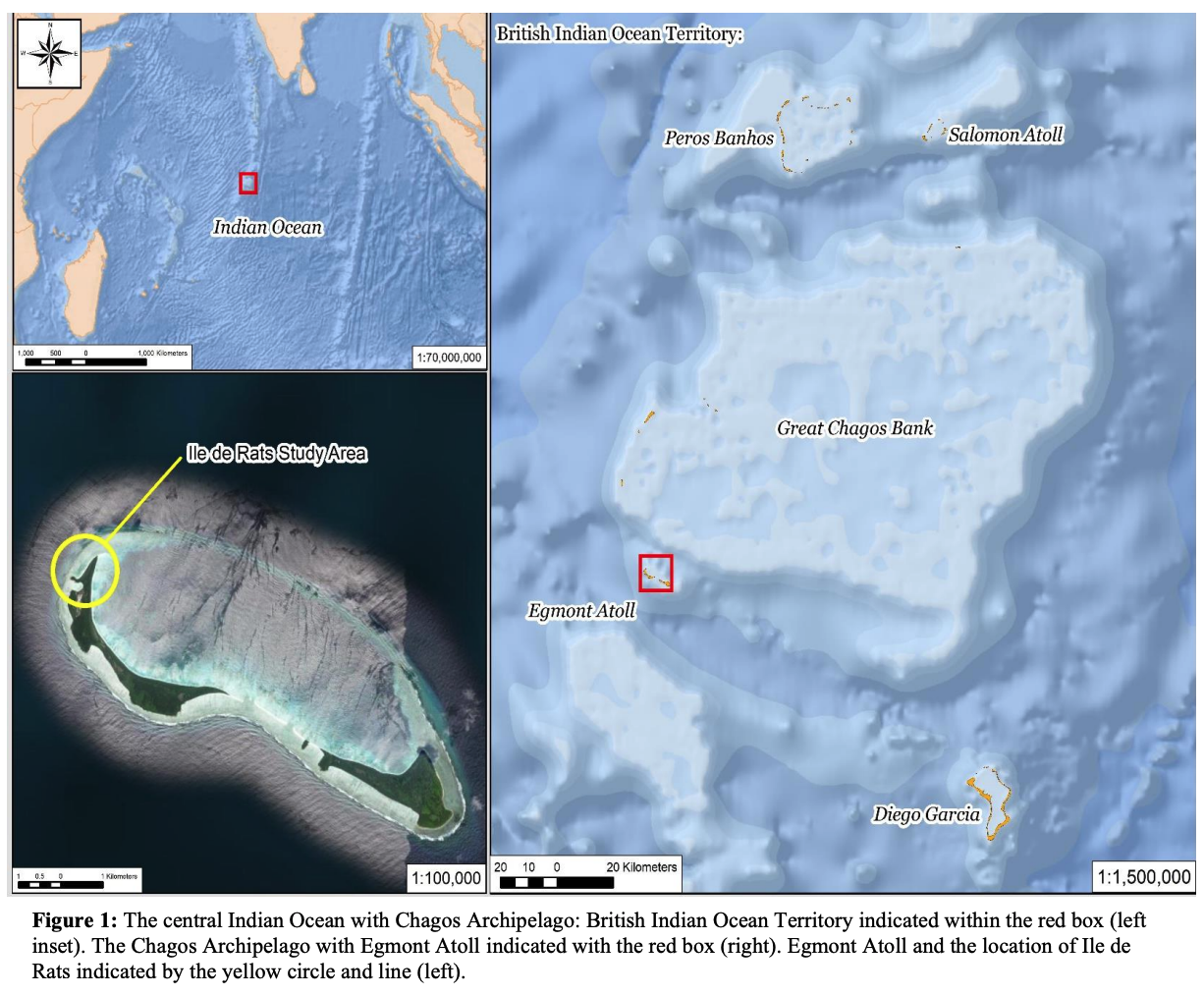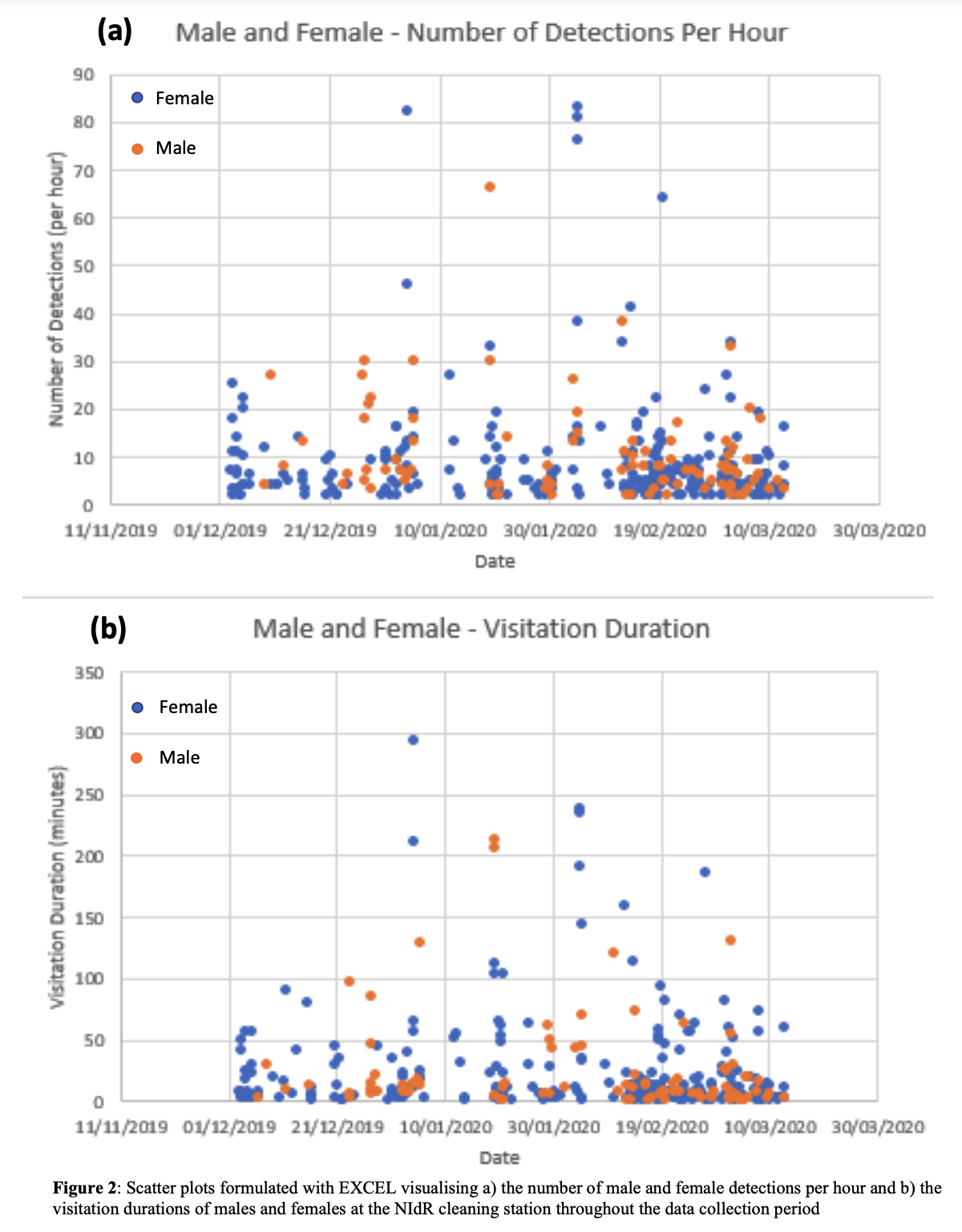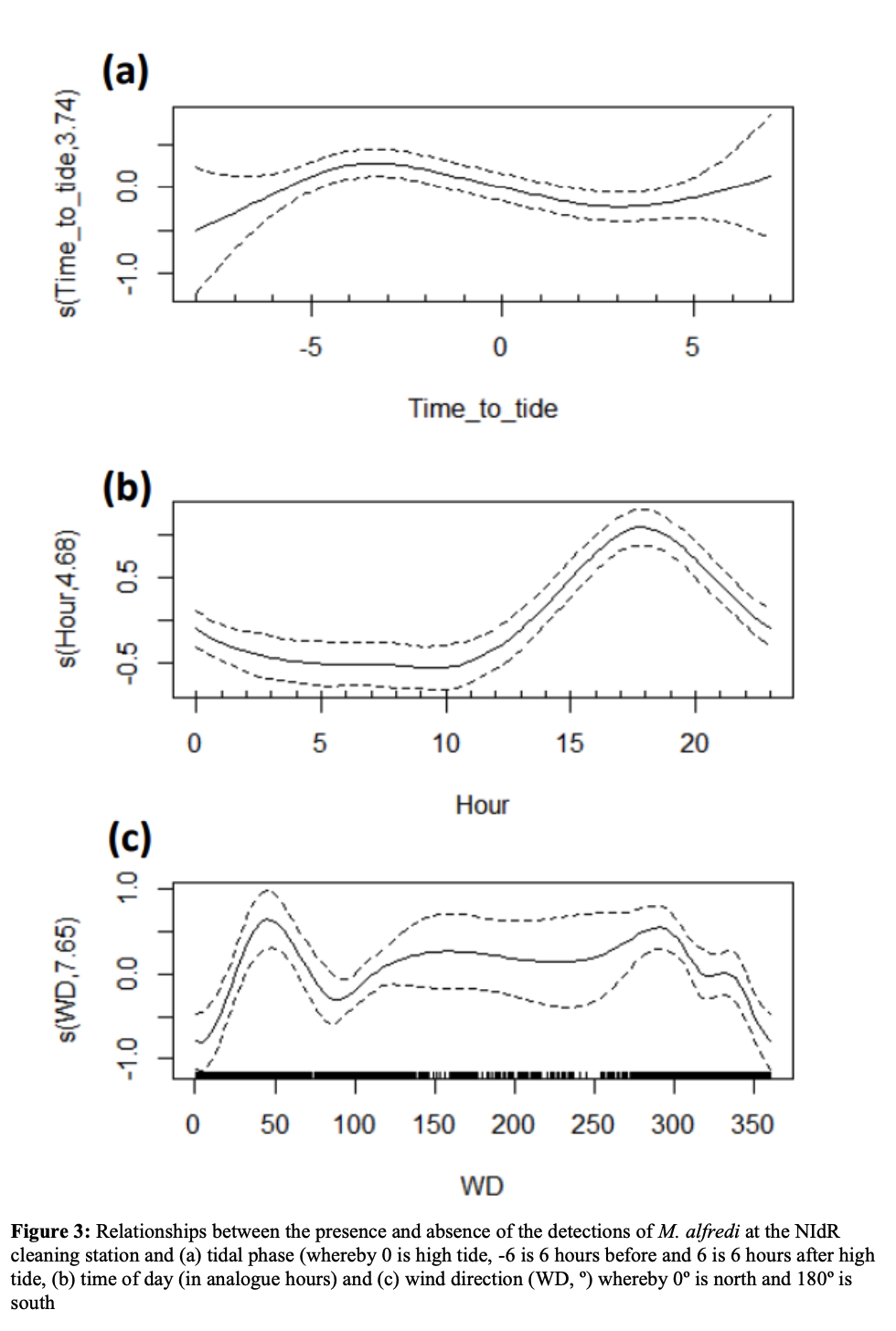Influences of reef manta ray (M. alfredi) visitation patterns to a remote cleaning station and the implications for conservation
2022
Darcy Brady (MSc Marine Conservation - University of Plymouth)



Summary: Reef manta rays (Mobula alfredi) are facing multiple threats, including overexploitation, bycatch fisheries, and unregulated eco-tourism. Due to slow maturation and low reproductive output, they are listed as Vulnerable to Extinction. This study focuses on the Chagos Archipelago, a Marine Protected Area, to observe undisturbed manta ray behaviours at a known cleaning station. Generalized Additive Models (GAMs) revealed that time of day, tidal phase, and wind direction were key factors influencing visitations to the cleaning station. Understanding these patterns can aid in conservation efforts and protect the species.
Executive Summary
“Reef manta rays (Mobula alfredi) face multiple threats, including overexploitation from targeted and bycatch fisheries and pressure from unregulated eco-tourism. A combination of these risks with slow maturation rate and low reproductive output has led to M. alfredi being listed as Vulnerable to Extinction on the ICUN Red List of Threatened Species. Highly mobile species, such as M. alfredi, can be challenging to protect. Therefore, it is imperative to not only identify key aggregation sites of M. alfredi, but to develop an understanding of patterns of these visitations as well as factors that may influence them. Previous studies have investigated the fine-scale oceanic drivers of visitations to aggregation sites, but few have focused primarily on cleaning stations. The Chagos Archipelago (hereafter; Chagos) was established as a no-take Marine Protected Area (MPA) in 2010, with a coverage of 600,000km2 . All of the islands are uninhabited (except for Diego Garcia, southernmost atoll), as a result, the marine environment is relatively untouched and in excellent ecological condition. Thus, this makes Chagos an excellent location for observing undisturbed behaviours of the M. alfredi sub-population which reside there. The study location focuses primarily on a known aggregation hotspot used as a cleaning station, namely North Ile de Rats cleaning station (NIdR). The Manta Trust tagged 20 M. alfredi Individuals with acoustic transmitter tags whilst within the Egmont atoll and deployed an omnidirectional acoustic receiver at the NIdR cleaning station (13.6 meter depth and 2 meters above the seabed). Generalised Additive Models (GAMs) were used in R ® to analyse the relationship between the presence and absence of detections and environmental influences, these influences were; time of day, windspeed (km/h), wind direction (º), rainfall (presence and absence), tidal phase and sea surface temperature (ºC). A total of 17 M. alfredi individuals were detected between the 3rd of December 2019 and the 13th of March 2020, collating a total of 3,601 detections throughout the data collection period. The individuals with the top three total detections were all females (407, 395 and 359 detections) and the three individuals with the least total detections (43, 61 and 70 detections) were all male. Suggesting a species demographic segregation may occur at the site. The greatest total time spent at the NIdR cleaning station was by individual CG-MA-0035 (juvenile female) with a total duration of 1,390 minutes across 407 detections. GAMs highlighted three key predictors in M. alfredi visitations to the NIdR cleaning station, including time of day, tidal phase and wind direction. The variables were tested in separate GAMs, which found that likelihood of visitations increased; between ~13:00 and 23:00 o’clock, with peak likelihood at 18:00 o’clock for time of day, three to four hours before flood tide and with the most significant wind directions of 50º (north easterly). Results for time of day suggest the NIdR cleaning station is a multipurpose aggregation site, as visitations peak at and after sunset, when cleaner wrasse are no longer active. These results can be used to improve visitation predictability to the NIdR cleaning station, inform the improving of protective measures within Chagos and wider regions for M. alfredi (such as informing the implementation of new MPAs at unprotected aggregation sites).”
Author Affiliations
University of Plymouth
The Manta Trust
